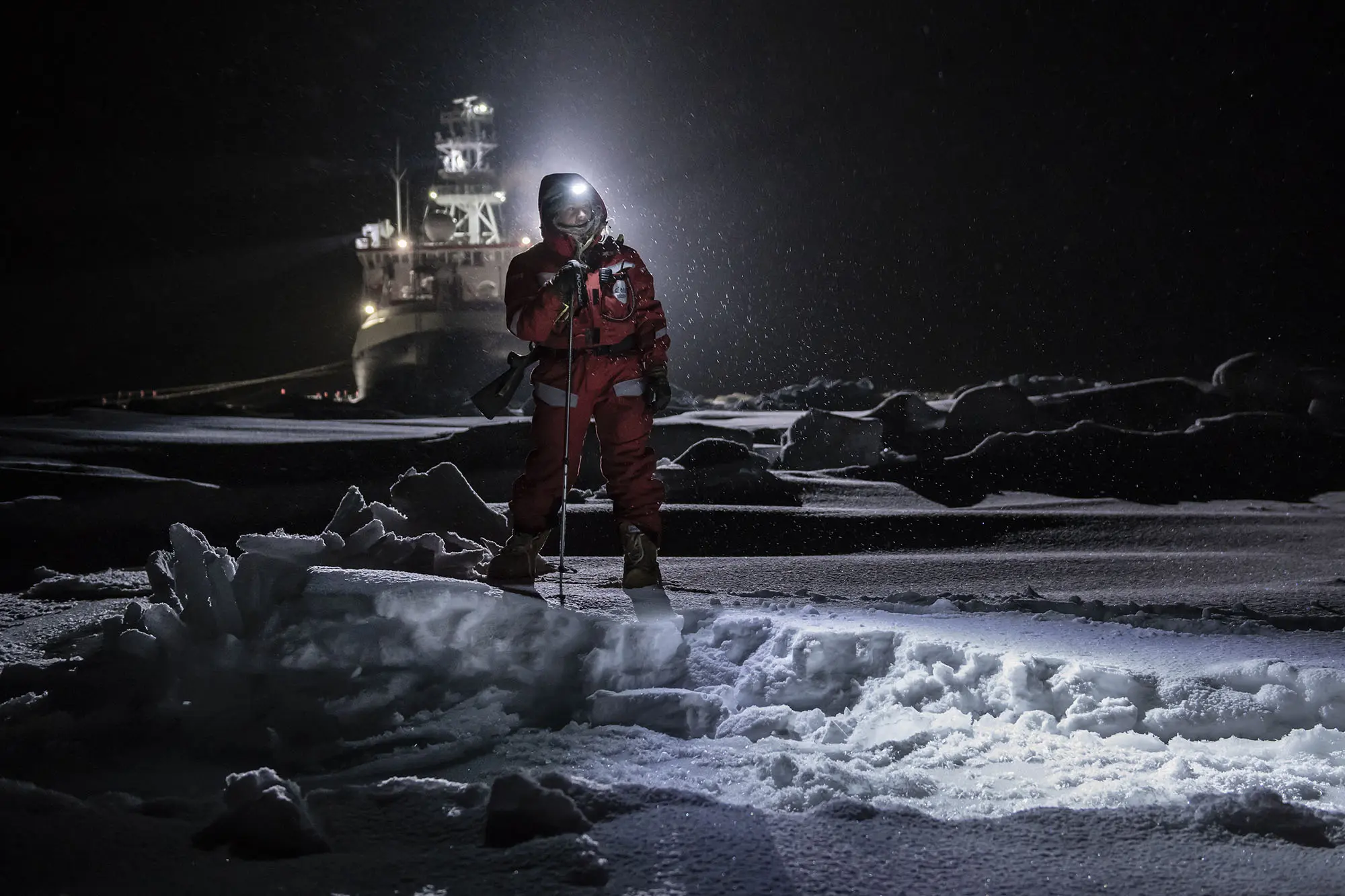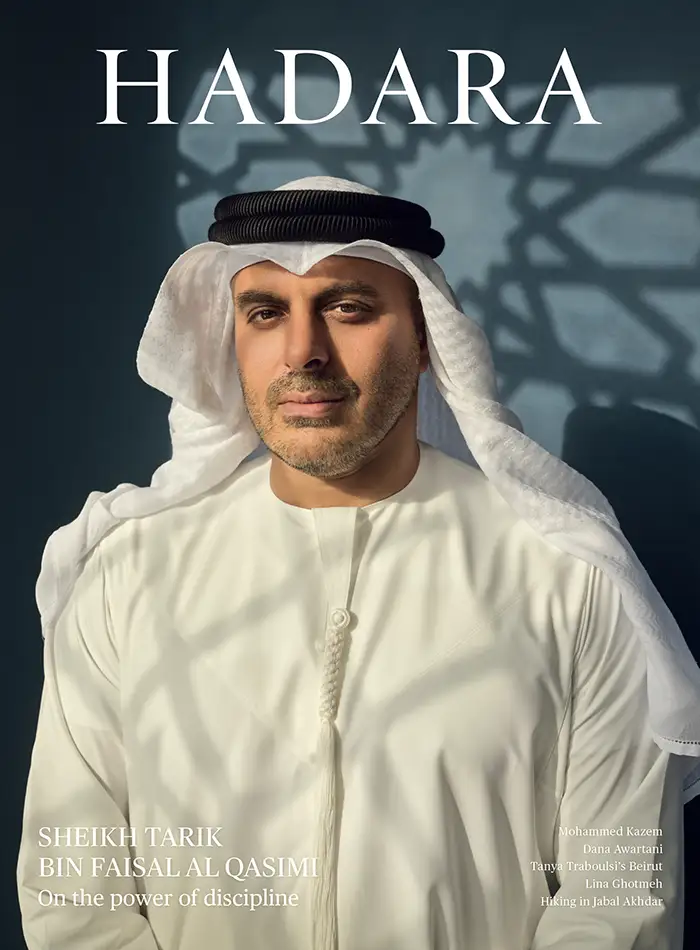Uncovering the untold
The seventh edition of Xposure connected the world—and beyond—through the universal language of photography.
By Anna Seaman
Fewer than a thousand people have been to the blackness of outer space. But some 20,000 were able to walk through the Xposure International Photography Festival in February, where photographs of space exploration were spotlighted in the near darkness of galleries set up as mock moonscapes—featuring boulders and suspended meteors.
Three photographers—Dan Winters, Andy Saunders, and John Angerson—presented exhibitions about space in the otherworldly setting. Winters, a National Geographic photographer who has spent much of his career documenting the NASA and Roscosmos manned space flight programmes, said it had been his dream to see his photographs exhibited artistically, to bring further life to their content.
“Exhibited like this, they become more than they are,” Winters said of his photos. He was standing in his exhibition, Beyond Flight, where dramatic images captured the grandeur of space launches and the minute detail involved in space exploration, including portraits of the suit and gloves worn by Neil Armstrong during his first moon landing.

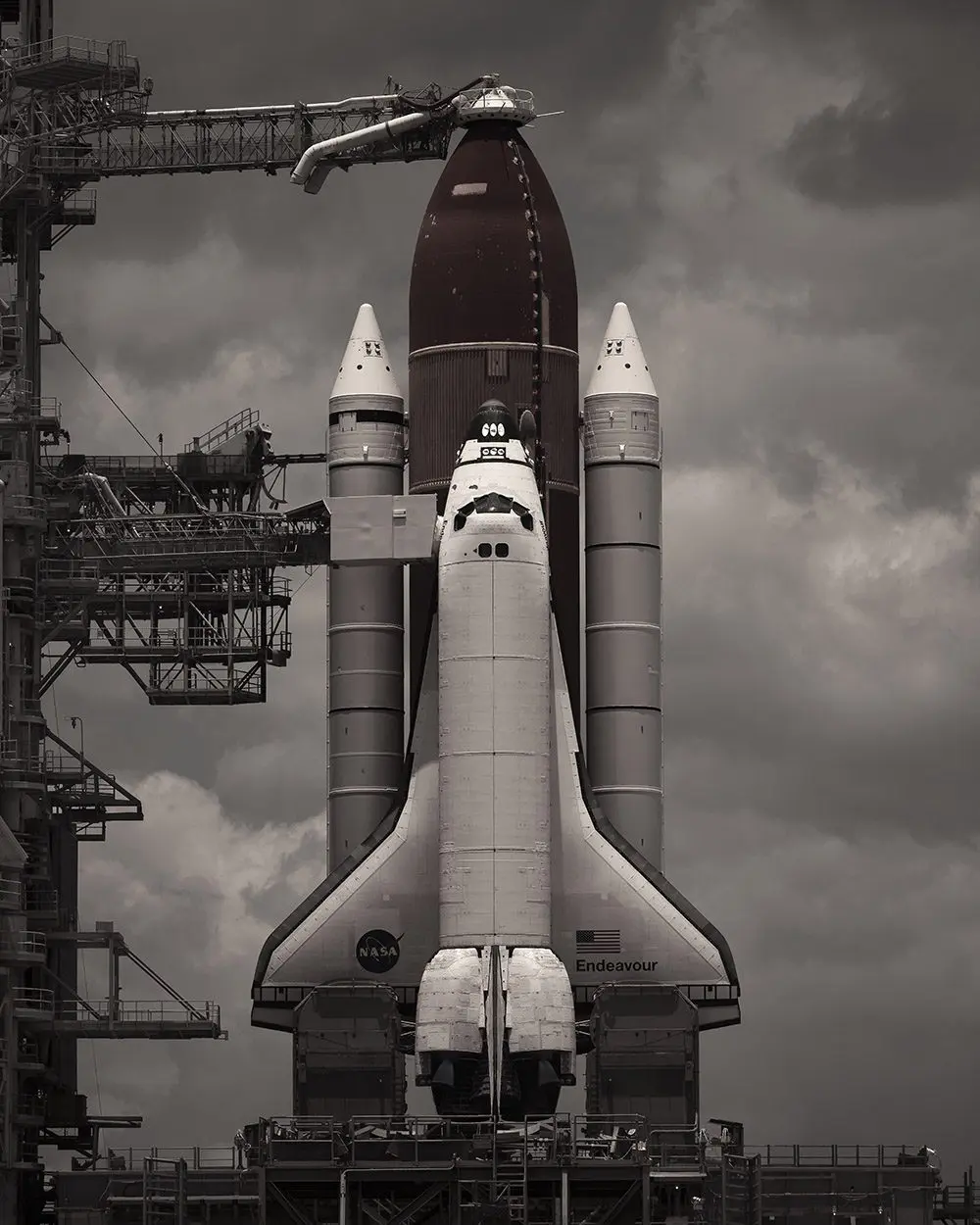
Opening image: ESTHER HORVATH The MOSAiC expedition was the climate-science equivalent of going to the moon. Experts from 20 countries studied changing sea ice near the North Pole. Top: KAREN ZUSMAN The death of George Floyd compelled Zusman to take to the streets of New York. She captured the early days of the Black Lives Matter protests. Above: DAN WINTERS Winters captures both the grandeur of launches and the detail of space exploration. Shown here is the Space Shuttle Endeavour (2011).
In Apollo Remastered, Saunders used the latest digital techniques to enhance scans of original NASA film from the Apollo missions. The remastered images, made from film that rarely leaves the frozen vault where it is stored, included one never seen before of Armstrong on the moon. Revealing detail that had been lost for half a century, they offered astounding new insight into humankind’s greatest adventure. Angerson was granted unprecedented access to the Kennedy Space Center in Florida and the Johnson Space Center in Texas to document the intensive training of astronauts for a 1996 Shuttle mission in NASA (STS-72) Astronauts.
The seventh edition of Xposure featured 68 exhibitions with 1,794 images by 74 photographers, covering the gamut of subjects, from the vastness of space to the intimacy of family and the microscopic details of insects.
One of the most memorable exhibits was James Balog’s The Human Element: A Time Capsule from the Anthropocene, an artistic response to the fragility of the natural environment and the devastating impact of humanity upon it. Giant Sequoia “Stagg” is a large mosaic combining more than 800 photographic fragments of Stagg, the fifth largest tree in the world. To capture the images, Balog suspended himself from the top of Stagg and the giant sequoia opposite, photographing as he descended. The conceptual nature of the image is intended to evoke not only the power of the sequoia tree—one of the world’s largest living creatures—but also the changing landscape of the American forests. “We photographers are the tips of the antennae as the great caterpillar of techno-industrial civilisation crawls into the unknown,” Balog wrote in his moving exhibition statement.


Top: ALBERT DROS A Dutch photographer with a passion for landscape photography, Dros captured the pristine beauty of Kyrgyzstan. And with this image, the nomadic lifestyle of farming families. Above: JAMES BALOG For 40 years, Balog has broken new conceptual and artistic ground on one of the most important issues of our time: human modification of nature.
Climate change and messages of conservation have often been part of the programming at Xposure. This year, a summit of keynote speeches, panel discussions and presentations was dedicated to the subject. Speakers included Balog himself, who discussed his powerful Anthropocene series. Award-winning documentary photographer Esther Horvarth has photographed 15 expeditions in the Arctic and Antarctic, working with groups that are trying to better understand the changing polar regions. Here she presented compelling images from the year-long MOSAiC expedition, the most extensive scientific initiative every undertaken in the Arctic, the epicentre of global warming. The expedition sought to gain fundamental insights that are key to understanding global climate change. Danish photographer Carsten Egevang’s spectacular exhibition, Greenland Unseen…, and the passionate talk he gave highlighted the pressing reality of climate change in Greenland, on its people, their traditional hunting methods, as well as the fragile flora and fauna.
Also in darkened galleries, the numerous wildlife photography exhibitions couldn’t have been more down to earth. The images were lit with highly focused Leko lights for theatrical effect. Some of the most striking were in The Mystery of Life, Pedro Jarque Krebs’s studio-style, close-up portraits of endangered species that almost resembled paintings, and Levon Biss’s Extinct & Endangered: Insects in Peril, which featured portraits of 40 extinct or endangered species enlarged 300 times, on black backgrounds, revealing “a world invisible to our naked eyes”. The long flowing fins of Siamese fighting fish as depicted by Indonesian Novandro Manik were also dramatic. The effect of seeing creatures in this way gives way to understanding. If we are to live in harmony with the species that surround us, it is essential that we feel empathy.

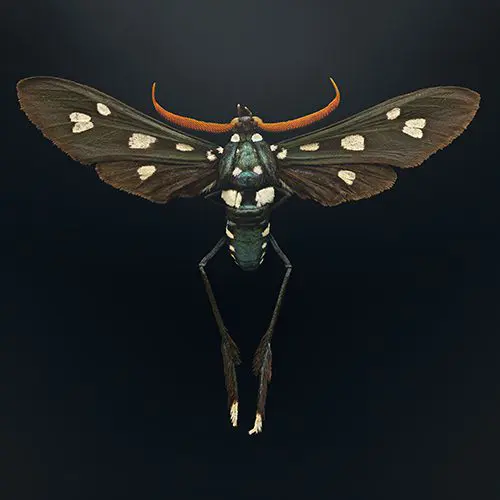
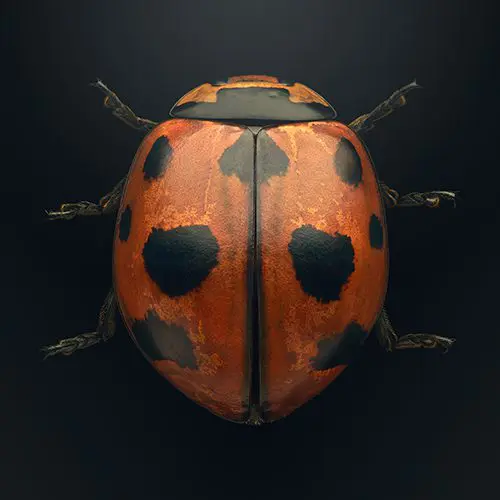
LEVON BISS Insects are at once familiar and mysterious. In collaboration with the American Museum of Natural History, Biss presented 40 extinct or endangered species.
Photography “is a medium that not only provides entertainment, but also serves as a conduit to raise consciousness and educate on important social and environmental issues,” said HH Sheikh Sultan bin Ahmed Al Qasimi, deputy ruler of Sharjah and chairman of Sharjah Media Council. “The festival is a platform that allows participants to make global statements about the importance of conserving our planet and promoting peace and understanding. Through the powerful narratives depicted through the lenses of photographers, we aim to raise awareness about these issues, alter perceptions and perspectives, and inspire individuals to take action to make a positive impact on the world.”
In addition to arresting images of global significance, there was room too for aesthetic experimentation. Celebrating the art of construction, Malaysia-born photographer Swee Choo Oh presented an architectural study of the Walt Disney Concert Hall in Los Angeles. The silver sail-like structures of the building were reflected in water in her photo essay.
“Nobody anywhere in the world has ever put a festival on of this
calibre,” said celebrity photographer Greg Gorman. In It’s Not About Me, Gorman presented a collection of analogue portraits of celebrities taken mostly during the 1980s and 1990s, displayed in the style of a hall of fame. Intimate looks at Hollywood stars such as Al Pacino, Johnny Depp, and Elizabeth Taylor reminded us of their youthful charisma. The exhibition also included portraits of notables in music, art and architecture, such as Barbra Streisand and Andy Warhol.
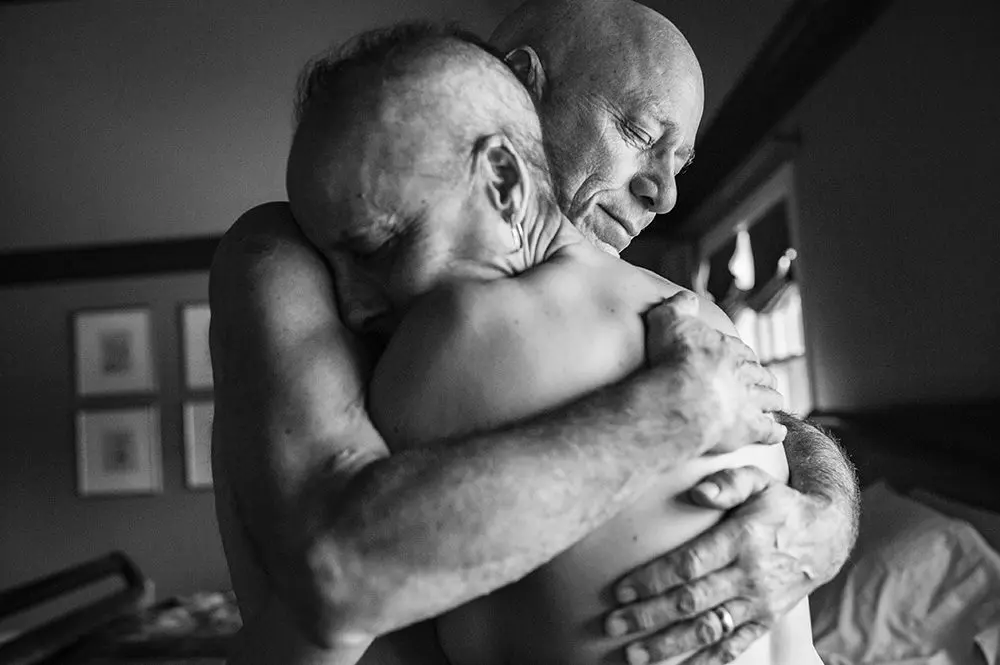
NANCY BOROWICK The Family Imprint: A Daughter looked at a family’s experience with two parents who were in
parallel treatment for stage-four cancer.
The diversity of photographers and subjects offered a rich and challenging experience for attendees, often emotional. The Family Imprint: A Daughter chronicles the end-of-life journeys of photographer Nancy Borowick’s parents as they dealt with their parallel treatments for cancer—pancreatic for her father, breast for her mother. The touching photos show “the good, the bad, the important and the frivolous in the face of death.”
Karen Zusman captured the early days of the Black Lives Matter protests in New York City following the murder of George Floyd in BLM Justice Rides in NYC, 2020. First, Zusman was on foot, and then by bike—the weekly “Justice Rides”—offering the viewer the perspective of documenting and protesting at the same time.
Celebrated sports photographer and filmmaker Neil Leifer had a 60-year retrospective at Xposure. Over his career, Leifer has photographed 15 Olympic Games, four FIFA World Cup football tournaments, 13 Super Bowls, and every important heavyweight boxing title fight since 1960. Leifer has photographed many of history’s most notable figures too, including Fidel Castro. But perhaps he is most well known for having documented his favourite subject, Muhammad Ali, including the famous shot of the champion standing over a defeated Sonny Liston.
Xposure is more than a photography exhibition, encompassing talks, focus groups, portfolio reviews, a conservation summit, an equipment trade show, book signings, and an awards ceremony. Information sessions and workshops are designed for amateur, intermediate, and professional levels. It also featured the Junior Photography Awards, dedicated to supporting young photographers in the UAE and providing opportunities for them to exhibit their work, as well as offering portfolio reviews to 50 photographers.
“The festival not only showcases the awe-inspiring work of photographers, but it also serves as a medium for people from different backgrounds and cultures to connect, learn, and be inspired by each other’s experiences,” said HH Sheikh Sultan bin Ahmed. “It is a celebration of the power of photography to unite people and foster a deeper understanding and appreciation of our world.”

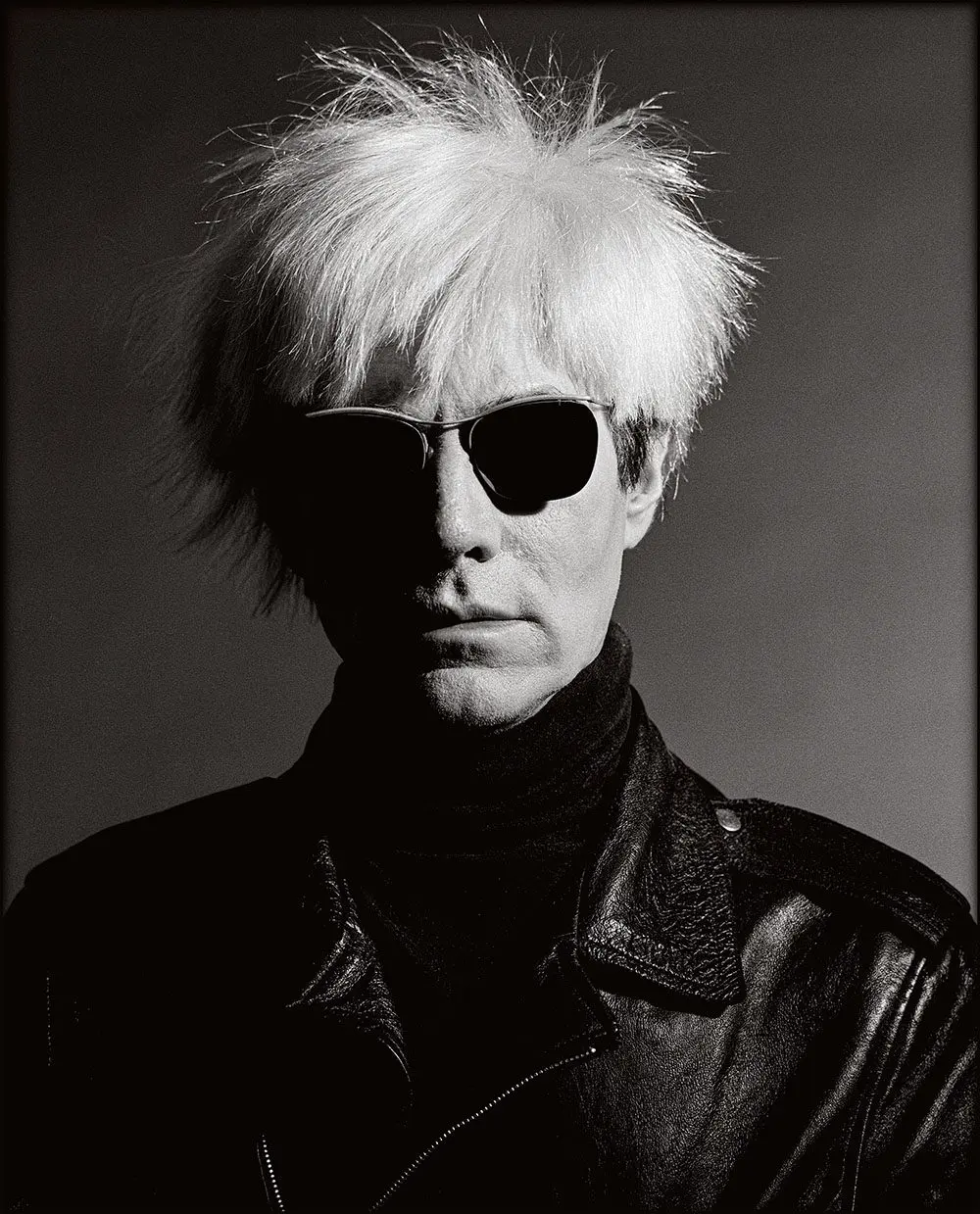
Top: NEIL LEIFER This exhibition was a survey of Leifer’s 60-year career. Here, Muhammad Ali reacts after his first-round knockout of Sonny Liston during the 1965 World Heavyweight Title fight. Above: GREG GORMAN Known for his stark, honest portraits of the most famous and infamous faces from the worlds of entertainment, art, sport and music. Here, Andy Warhol, Los Angeles (1986).

